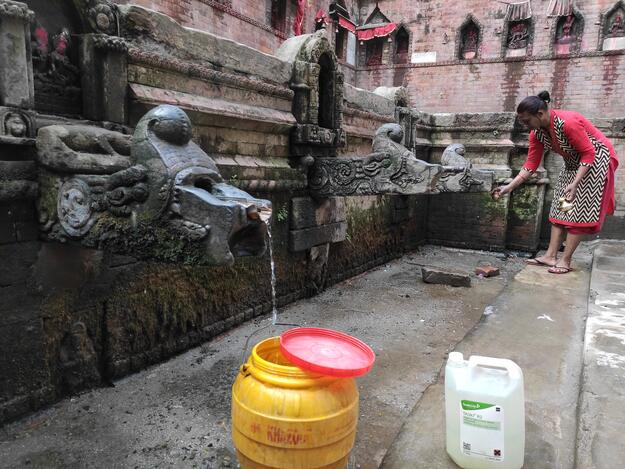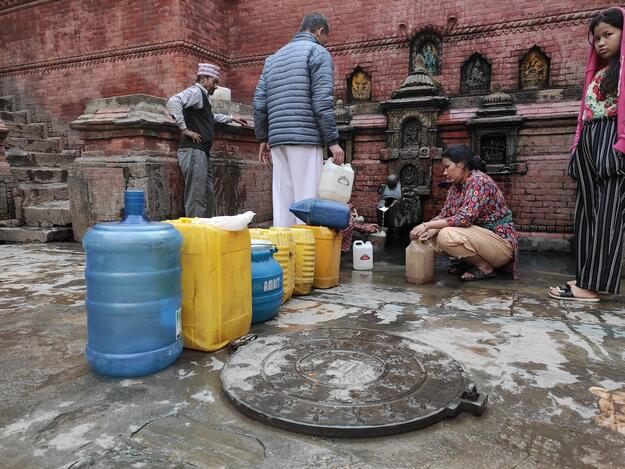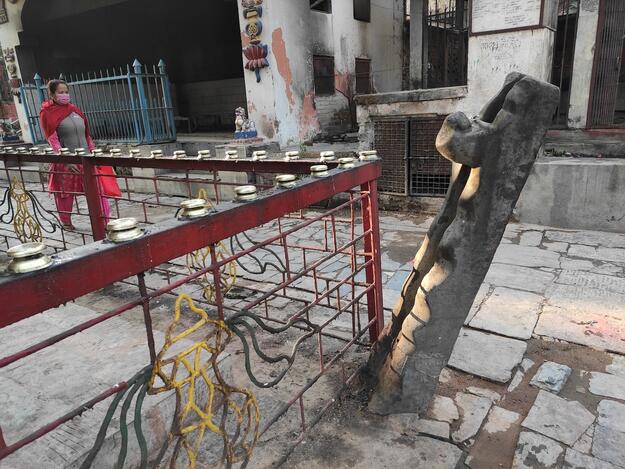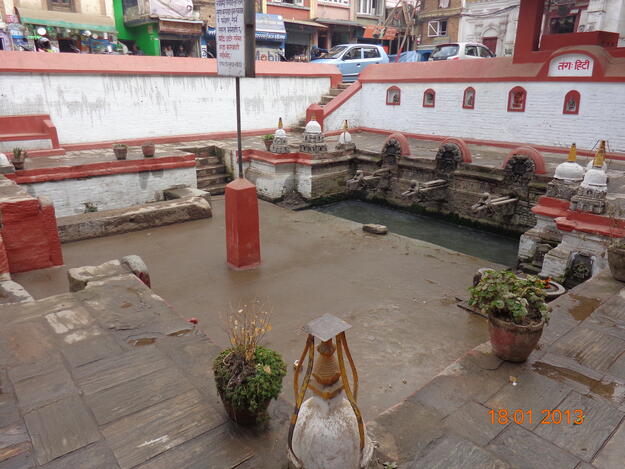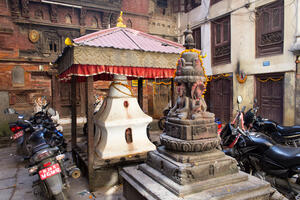Hitis (Water Fountains) of the Kathmandu Valley
Site History and Significance
Water Access in the Kathmandu Valley
In the Kathmandu Valley of Nepal, nearly 20% of residents do not have access to water within their homes and must seek their daily supply elsewhere. While more than 70% of the valley’s population relies on piped underground water, in recent years Kathmandu water purveyors have provided water only intermittently, sometimes just a few days a month, with the increasing severity of monsoons further interrupting supply.
The Potential of Traditional Water Fountains
Given these challenges, traditional public water fountains, known as dhunge dhara or hitis, are essential to the local population. Dating from as far back as the sixth century CE, hitis have long been fixtures of the Kathmandu Valley. The ornate fountains are typically carved in the form of Hindu and Buddhist mythical creatures known as hitimanga, or makara in Sanskrit, and estimates from 2008 stated that they provided nearly three million liters of water per day. Today, only a fraction of extant hitis still provide water, and continuing development threatens their existence.
Our Involvement
Restoring the Lifeline of the Kathmandu Valley
Part of a rich cultural landscape, the hitis are also a lifeline for communities throughout the region, and their protection and restoration would play a significant role in sustaining reliable access to water for the communities of the Kathmandu Valley of Nepal. The goal of the project is to rehabilitate a portion of the hitis for continued use by locals in the face of mounting water scarcity. To achieve this, World Monuments Fund (WMF) will collaborate with local communities and authorities to conduct landscape analysis, hydrological assessment, and rehabilitation of a selected hitis channel and provision point. This water rehabilitation project will establish a model for other hitis of the valley and other traditional systems across the region.
2022 World Monuments Watch
The 2022 World Monuments Watch includes the Hitis of the Kathmandu Valley in an effort to raise awareness of this essential network of traditional water fountains and call for their enhanced protection, as well as support improved management of the underground aquifers and water table that feed them. Exploring the historic infrastructure’s potential to address a contemporary crisis, WMF is undertaking an in-depth physical and hydrological assessment of the hiti system and conducting demonstration projects that will contribute to future conservation efforts.
![]()
Learn More
Through the World Monuments Watch, WMF collaborates with local partners to design and implement targeted conservation programs—including advocacy, planning, education, and physical interventions in the historic built environment—to improve human well-being through cultural heritage preservation.
Sign up for our newsletter to receive regular updates on our projects, stories from the field, upcoming events, and more!
![]()
World Monuments Fund's work at the Hitis of the Kathmandu Valley of Nepal has been made possible, in part, by support from the U.S. Ambassadors Fund for Cultural Preservation; the U.S. Embassy Kathmandu; the Watch Committee of World Monuments Fund; American Express; Iron Mountain; and Tianaderrah Foundation / Nellie and Robert Gipson.

